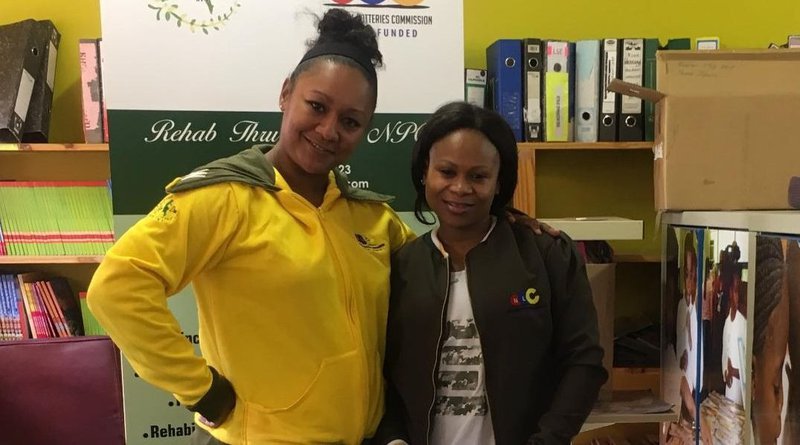‘Rehab Through Dance’ transforms the lives of SA youth
Updated | By ThriveIn
The founders of ‘Rehab Through Dance’ chat to us about the incredible work they are doing to transform the lives of youth in Gauteng.

Many children in townships and rural areas are underprivileged. Because of the high levels of poverty and crime, some end up engaging in activities that have the potential to damage their futures.
Two ladies who have devoted their lives to ensuring that kids are given a chance at a better future are the founders of ‘Rehab Through Dance’, Megan Erasmus and Ayanda Williams.
For Megan, the decision to start the initiative was birthed by her own experience as a young girl growing up in a township in Cape Town. She developed a passion for dance which she says changed her life.
“My life was transformed through dance. I started dancing when I was 5-years-old. I loved dancing so much that in High School, instead of getting up to mischief after school, I’d go to a dance school, says Megan. She says she also attended a community-based dance school because she could not afford to go to a private one.
The 39-year-old, who is a professional dancer and has worked with the likes of Somizi Mhlongo, says had it not been for dance, her life would have most probably gone bad. She says dance is a rehabilitation for the mind, body and soul.
“Dance helps kids learn how to express themselves, be creative and be in a better position to handle their emotions,” she says.
Her partner Ayanda adds: “we use dance to help give the young people and children a chance to a better life. Our first project was started at Walter Sisulu Primary in Olievenhoutbosch. We realised if kids are underprivileged it’s hard for them to find dancing schools anywhere, especially at the area where they live,” says Ayanda.
The two say although they have faced a lot of challenges such as lack of funding and kids not having dance shoes and clothes, what kept them going was seeing the positive change in the lives of children.
“We have faced some challenges. We don’t have space in the premises, so we dance outside where we are exposed to the sun. The kids don’t have sneakers and shoes. Some use their school shoes and are too scared to take their school shoes off, in case another child steals them. Some train in uniform, they don’t have play clothes. Mom says, “no you are not going to get dance clothes”, but despite all these challenges we have great testimonies,” says Ayanda.
“When we initially started, it was very hard to get the kids to be disciplined and to quiet them down. We have seen a change in their thought pattern, behaviour and they are more disciplined,” says Megan.
“We are instilling discipline in the form of dance. We are giving them what they enjoy. Now if they could also implement that in classrooms where you are giving that discipline but, in another form, where it’s entertaining as well, kids really pay attention,” says Ayanda.
Another highlight was seeing a child who used to have anger issues transformed.
“He had an anger problem. Everyone said he is always fighting with us. He would just break out into anger, and he is quite talented. When you give him attention, you can see how this boy could grow in dance,” says Megan.
She adds that after the boy channelled his emotions to into dance, his anger subdued. He allowed dance to discipline him and it helped him deal with his emotions in a better way.
The two founders say they hope to see their initiative grow bigger and attract more funding because without funds their initiative might fail.
“We are hopeful that it won’t reach that stage where it fails because of lack of funding and would really appreciate all the help we can get. We are also hoping to have a few more halls where we can gather the youth and teach them to dance. We plan to have more schools where we could offer our services. Our biggest wish is to have a yearly massive dance event where we would involve other artists and pull all the children from different backgrounds to gather and dance, “says Ayanda.
“People don’t see dance as a career and we want to change that. We are proof that you can dance to make a living, and we are offering that to the underprivileged kids in rural areas and townships,” says Megan.
Through their initiative, they say they hope to eradicate poverty and inspire hope in the youth.
Show's Stories
-
WATCH: SA politicians' faces placed in urinals in Sasolburg
A video showing South African politicians' faces placed in urinals in a ...
Breakfast with Martin Bester 39 minutes ago -
SA's most expensive city to buy groceries
This is the most expensive city to buy groceries as of June 2025.
Breakfast with Martin Bester an hour ago